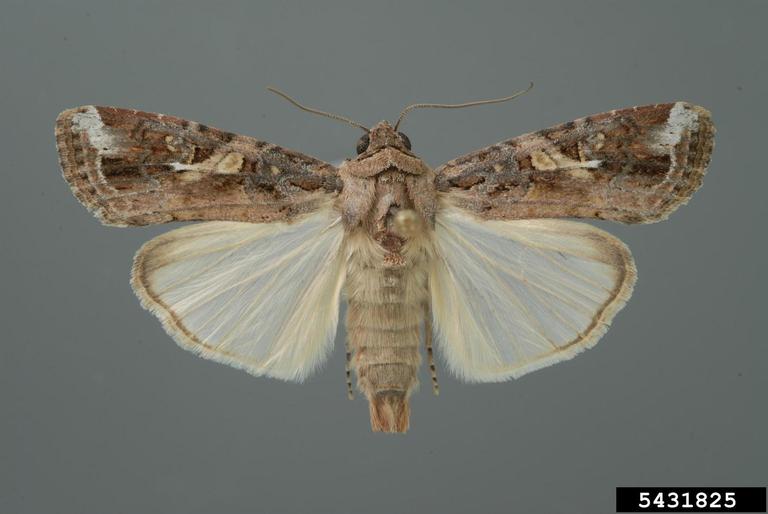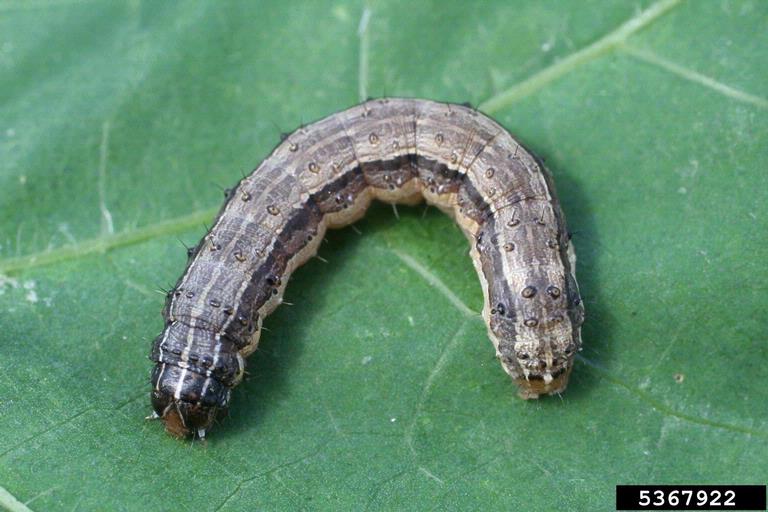The fall armyworm, Spodoptera frugiperda, is an occasional pest in western Canada. Similar to diamondback moth, the adult stage of this species can migrate into Canada with the aid of winds originating in the United States. So far as we know, fall armyworm cannot withstand cold Canadian winters. As a result, it is not a full-time resident pest in Canada.

Fall armyworm adults feed on nectar and do not cause any direct damage to crops. Adults have grey, mottled forewings and light coloured hindwings. The forewings have a patches of white scales near the wingtips. Adult fall armyworm lay eggs on their host plants upon arrival in Canada, usually in May and June. If fall armyworm arrive in Canada early enough, a new generation of adults can lay eggs again starting in late July.

The larvae develop feeding on grasses including cereal and corn crops. Larval feeding damage can affect crop yields. For example, larval feeding can prevent plants from producing normal seed heads or ears of corn. The larvae can vary in colour from green to grey, but the head is dark brown and has an upside down “Y” in white.
In eastern Canada, the Great Lakes and Maritimes Pest Monitoring Network uses pheromone traps to monitor for the arrival and activity of fall armyworm. Instructions for in-field scouting and monitoring for fall armyworm are available from the Ontario Ministry of Agriculture, Food and Agribusiness. More information about fall armyworm is available in Field Crop and Forage Pests and their Natural Enemies in Western Canada available in English and French.
